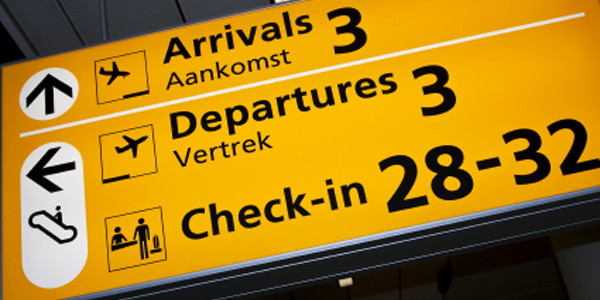Business Travel or T&E is my favorite complex category of spend because (a) it is large and has many moving parts and stakeholders, (b) procurement departments with their sourcing strategies can make a large impact on it, and (c) as a longtime business traveler, I have a great appreciation of the impact of travel policies, expense management processes, and the usage of corporate cards.
I recently delivered a webinar for Concur where I presented my Five Resolutions for More Effective T&E Management in 2011 – for those of you who missed it, a replay is available here (registration required).
Before diving into the resolutions, I’ll try to set the stage with Six Trends in Business Travel.
1. Travel budgets are back – They’ve been back for some time. 2010 for most industries was a welcomed change from the two years that preceded it. As I spoke to business leaders and travel managers at different events last year, it was clear that the tide had turned for most groups and a return to travel normalcy occurred at many enterprises. Travel budgets were definitely back and back strong for many enterprises and the area of my specific research focus, technology budgets, were really back, in no small part due to pent-up demand caused by the global recession. While 2011 has started strong and the global economy continues to churn, many economists expect a slowdown by or during the summer. Whenever uncertainty like this sits on the horizon, I recommend that those groups with approved technology budgets pick up the pace on their projects and get their contracts executed sooner, rather than later – you can still start the deployment when you originally planned.
2. Consolidation and “scarcity” strategies conspire to constrain supply – Travel industry consolidation has started to impact pricing, particularly air travel. Normally we see price spikes driven by seasonality (to a degree) and more significantly, by a rise in oil prices. On the heels of one of the toughest recessions ever witnessed by the airline industry, mergers, the downsizing of capacity, and bankruptcies have resulted in fuller planes and higher prices. The airlines that are still standing seem determined to stay profitable this time – even as the economy steadily improves – we’ll see about that. For US travelers heading abroad, the good news is that a relative strengthening of the US Dollar, which many predict, can counteract some of the impact of rising airline ticket prices
3. Fees, Fees, and More Fees – It used to be that when you paid for something, you understood its cost. But something funny happened on the way to the airport that changed all of this and, I mean literally, on the way to the airport – those of you “fortunate” enough to frequent Boston’s Logan Airport may recall that just a few years ago, your ability to get a parking spot was on a first-come, first serve basis. Those days are long gone. Today there are large blocked off “premium” sections in the garages as well as other “value-added services” which may ease the stress of airport parking, but add some significant weight to your travelers’ next expense report. Of course, there are the fees that are now charged for things that used to be included like bags and meals, for example. Finally, the travel vendors have gotten quite sophisticated in creating and selling many new travel products that are offered a la carte to your travelers (for a fee, of course).
4. Travel risk again showed its many heads in 2010. For this I have one word, albeit, one poorly pronounced word: Eyjafjallajökull!!!
5. By some accounts the 2010 changes to the US government’s security policies for airline travelers were the most stringent and cumbersome yet. While cost may not be the largest component of the impact of this trend on the business traveler – inconvenience and uncertainty began to crest at the end of the year as travel managers scrambled to prepare their people.
6. “An App for that” – “App” was officially anointed as the word of the year for 2010. In business travel, which by definition requires mobility of staff, the growing field of mobile apps for business travel has become one of the hottest segments around and something to track.
Who is responsible for tracking business travel trends in your enterprise?

